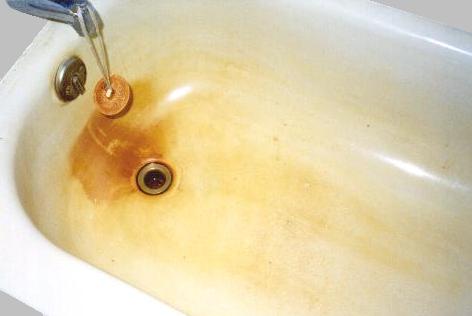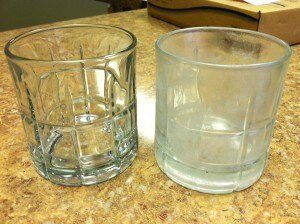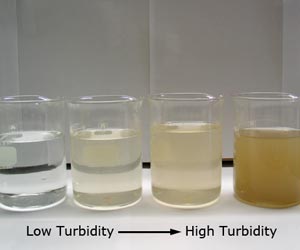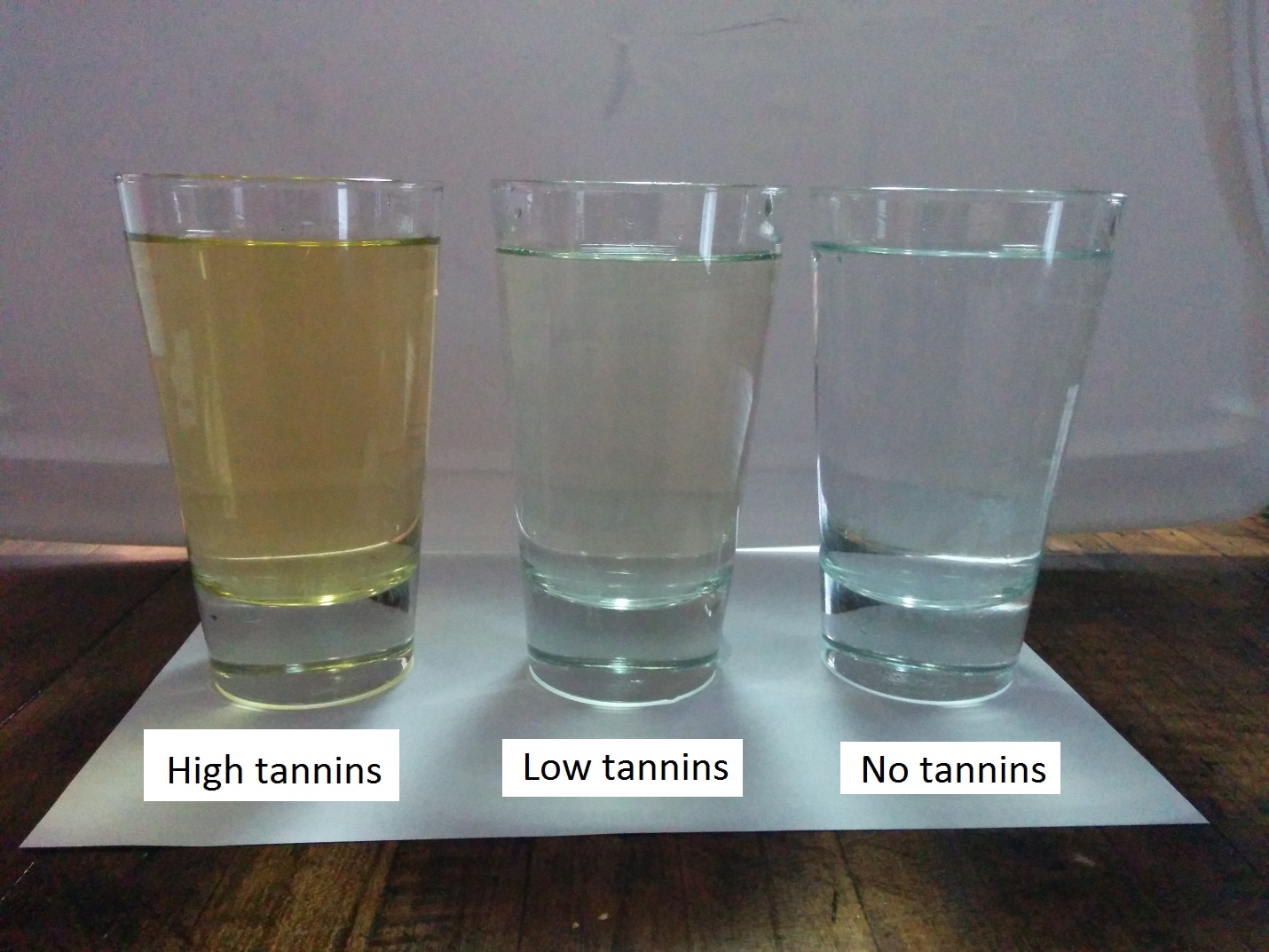- Hot Tubs & Spas
- General Information
- Chemical Dosage Charts for Hot Tubs
- Hot Tub FAQ
- How Hot Should my Hot Tub/Spa Be?
- Ultraviolet Disinfection (UV-C) for Hot Tubs
- Bulk Tubing and Hose
- Total Cost of Ownership (TCO) - Water Pump
- How-to Articles
- How to Get Rid of Algae in a Hot Tub
- How to Restart Your Hot Tub If You Haven’t Used it in a Year
- How to Test Your Hot Tub Water
- How to Properly Add Chemicals to Your Hot Tub
- PVC Installation Tips: How to Glue PVC Pipe
- Thread Sealants - Teflon Tape or Paste?
- Irrigation
- General Information
- Understanding Drought Levels and Water Restrictions
- Vancouver Island Water Restrictions
- Vancouver Island Current Water Restriction Stages
- Filter Screen Mesh to Micron Conversion Chart
- Comox Valley Smart Control Irrigation Rebate
- Victoria Water History
- Friction Loss and Water Velocity Chart
- Bulk Tubing and Hose
- 2018 Weathermatic Catalogue
- How-to Articles
- Do-It-Yourself Irrigation Design and Installation Guide
- Introduction to Micro-Irrigation
- Rain Barrel Soaker Hose
- Tips and Caring for Your Soaker hose
- PVC Installation Tips: How to Glue PVC Pipe
- Thread Sealants - Teflon Tape or Paste?
- Product Info
- Weathermatic
- Weathermatic SL800 Bundle with Rain/Freeze Sensor
- Weathermatic T3 Turbo Rotor
- Weathermatic N-100 Nitro Valve
- Mr. Soaker Hose Basics
- Mr. Soaker Hose - Frequently Asked Questions
- Drip In Soaker Dripline for Irrigation
- Lake & Lagoon Management
- General Information
- Benefits of Pond and Lake Aeration (video)
- Previous Next List Information Item Actions NAME Kasco Fountains VX Series Overview (video)
- Pump Maintenance
- Total Cost of Ownership (TCO) - Water Pump
- Bulk Tubing and Hose
- How-to Articles
- Kasco Floating Fountain Installations
- Preventing Ice Damage - Kasco Marine De-icing Guide
- PVC Installation Tips: How to Glue PVC Pipe
- Thread Sealants - Teflon Tape or Paste?
- Product Info
- KASCO Marine
- Kasco LED Fountain Lights
- Kasco Marine 3400VFX Aerating Fountain Assembly (video)
- Kasco Aerating Fountains (video)
- Microbe-Lift PBL Professional Blend Bacteria
- Kasco De-Icers
- Kasco Robust-Aire Diffuser Overview (video)
- NEW Water Pump from Shinmaywa
- Landscape Lighting
- General Information
- Benefits of Landscape Lighting (pt.1) (video)
- Premium Outdoor Lighting vs Cheaper Brands
- Light Recycling Program Information
- How-to Articles
- Construct a Low Voltage Transformer Stand (video)
- Security Lighting at it's Best - Cast LED Perimeter Light (video)
- Outdoor Lighting Wiring Techniques - Crimp and Heat Shrink (video)
- Product Info
- DH Lights: Low Voltage Outdoor Lighting, Quality & Value
- Brilliance Flex Strip Lighting
- CAST Lighting FAQ
- Solid Bronze Bullet Light from Cast Lighting - (video)
- The CAST Niche Light (video)
- Tree Light from Cast Lighting (video)
- Outdoor Cooking
- General Information
- Southern Barbecue Comes to Van Isle Water
- How-to Articles
- Memphis Grills Outdoor Cooking Recipes
- Product Info
- Memphis Grills - A Revolution in Outdoor Cooking
- Memphis Grill FAQ
- Infusion Roaster - Turkey Cannon
- Create a Cutting Edge Fire Feature with Warming Trends' Cross-Fire Burner System
- Ponds & Watergardens
- General Information
- Everything Needed To Build a Koi Pond
- Everything Needed To Build a Pond Free Water Feature
- Benefits of having a Pond
- Do I Really Need a Pond Filter?
- Aeration - The Benefits of Bubbles
- Benefits of Pond and Lake Aeration (video)
- Waterfall Flow Chart
- It Seemed Like a Good Idea at the Time
- PondGard (EPDM) Decorative Applications Guide
- Pond Winterizing Tips and Tricks
- The Oasis Pump Vault - Under the Hood
- 2018 Atlantic Water Garden Catalogue
- Total Cost of Ownership (TCO) - Water Pump
- Bulk Tubing and Hose
- Pump Maintenance
- Friction Loss and Water Velocity Chart
- Light Recycling Program Information
- 2018 Warming Trends Mini Catalogue
- 2018-Atlantic-Catalog
- How-to Articles
- Pond Building Basics - Where Do I Start?
- Atlantic Water Garden - Pond Guide
- Atlantic Water Garden - Pond-Free Guide
- Atlantic Water Garden - Pond Pump Guide
- Atlantic Water Garden - Water Feature Guide
- Everything Needed To Build a Water Garden
- Everything Needed To Build a Pond Free Water Feature
- Everything Needed To Build a Koi Pond
- Oase Pondovac - Trouble Shooting
- OASE Bitron C Ultraviolet Water Clarifier (video)
- Filtrific The Pondless Problem Solver!
- Eco-Blox Assembly Instructions (video)
- How-to Assemble Atlantic's Eco-Blox (video)
- Eco-Rise Installation Diagram
- Installing an Atlantic Water Garden Eco-Rise System
- Atlantic Water Garden - Tidal Wave TT Pump Maintenance (video)
- Atlantic Water Garden - Tidal Wave TW Pump Maintenance (video)
- Atlantic Colorfalls: How to Winterize
- Atlantic Pond Protector Installation (video)
- PondGard (EPDM )Technical Guide and Manual
- How to Deal with Pond Algae?
- Pond Health - Spring/Summer Cleaner (video)
- Easy Pond Winterizing System (video)
- Pond Sludge Removal Without Vacuuming (video)
- Pond Health - Eliminate Ammonia in Your Water
- Pond Clarification (video)
- Benefits of Barley in your Pond (video)
- What is KH, and Total Alkalinity (video)
- How To Test Your Pond Water Chemistry
- Hudson Valve Troubleshooting & FAQ
- UV Bulb Replacement - Pond Water Treatment
- PVC Installation Tips: How to Glue PVC Pipe
- Thread Sealants - Teflon Tape or Paste?
- Product Info
- Oase Filtral UVC 700 - All in One Pump & Filter System
- Pentair All in One Pump & Filter System
- Oase Aquamax Eco Classic (video)
- Oase Aquamax Eco Premium (video)
- OASE filter pump video - Aquamax Eco (video)
- OASE Filtoclear 3000 (video)
- OASE Filtoclear 16000 (video)
- OASE Filtoclear (video)
- OASE Filters for Small Ponds
- OASE BioSmart 5.1 (5000) video
- OASE Biotec Screenmatic Overview (video)
- Oase Pondovac 4 - Action Video
- Filtrific Filter Tank and Expansion Tank demo (video)
- TidalWave3 TT Series Pumps from Atlantic Water Gardens
- The Atlantic Variable Speed Controller
- Atlantic Water Gardens - Colour Changing Vases (video)
- The Atlantic Colour Changing Colorfalls
- Inside the Shinmaywa Pump
- NEW Water Pump from Shinmaywa
- String Algae or Blanket Weed Problems?
- Microbe-Lift PBL Professional Blend Bacteria
- Fish Food Enriched with Beneficial Bacteria (video)
- Blue Diamond Aeration Pumps and Diffusers
- Kasco Pond Fountain
- Kasco Marine 3400VFX Aerating Fountain Assembly (video)
- Rockin Foam - pond and waterfall foam: FAQ
- Rainwater Harvesting
- General Information
- What is Rainwater Harvesting
- Rainwater Harvesting FAQ
- Water Conservation Tips
- Is Drinking Rainwater Safe?
- Basic Rainwater Harvesting System and its Components
- Rainwater Rewards Program & Stormwater Utility
- District Offering Big Cash Rebates for Rainwater Harvesters
- Winterize Your Rainwater Harvesting System
- Uniseal - Innovative Pipe Penetration Seals
- Bulk Tubing and Hose
- Pump Maintenance
- CANARM and the City of Victoria Rainwater Harvesting Initiatives
- ARCSA Training a HUGE Hit!
- How-to Articles
- Clean Rain Ultra Installation (video)
- How To Calculate Rainwater Catchment and Volume
- PVC Installation Tips: How to Glue PVC Pipe
- Thread Sealants - Teflon Tape or Paste?
- Product Info
- Leaf Eater Advanced
- Clean Rain Ultra (video)
- Wisy Vortex Rainwater Harvesting Filter (video)
- Premier Plastics Vertical Water Tanks, Septic Tanks and Pump Out Chambers
- Jobe Floats and Valves
- NEW Water Pump from Shinmaywa
- Rain Barrel Soaker Hose
- Sump & Wastewater
- General Information
- Living on a Septic System
- Where Does The Wastewater Go?
- 6 Signs your Septic Systems Needs to Be Pumped
- 9 Things You Should NEVER Flush Down The Toilet
- Sizing a Septic System
- Pump Maintenance
- Bulk Tubing and Hose
- Friction Loss and Water Velocity Chart
- Total Cost of Ownership (TCO) - Water Pump
- How-to Articles
- It's Sump Pump Time!
- Prevent Frozen Septic Systems in Winter
- PVC Installation Tips: How to Glue PVC Pipe
- Thread Sealants - Teflon Tape or Paste?
- Product Info
- SJE EZ Series In-Site CL Data Logging Control Panel
- SJE-Rhombus EZ Series In-Site CL Control Panel (video)
- Why Homeowners Need a Battery-Powered Backup Sump Pump System
- Flood Buzz Pro - Leak Alarm (video)
- Septic Systems, Beneficial Bacteria and Pro Pump FAQ
- NEW Water Pump from Shinmaywa
- Inside the Shinmaywa Pump
- Leader BVP Heavy Duty Solids Handling Pump
- Little Giant Grinder Pump (video)
- Red Lion Gas Powered Pumps
- Premier Plastics Vertical Water Tanks, Septic Tanks and Pump Out Chambers
- Swimming Pools
- General Information
- Swimming Pool FAQ
- Common Misconceptions about Pool & Spa Care
- Chemical Dosage Charts for Swimming Pools
- Chlorine vs. Bromine
- What is Over Stabilization in a Swimming Pool or Spa
- Pool and Spa Water Conservation Tips
- Bulk Tubing and Hose
- Friction Loss of Common Pool System Components
- Friction Loss and Water Velocity Chart
- Chemical Resistance Charts
- Total Cost of Ownership (TCO) - Water Pump
- How-to Articles
- Testing Your Swimming Pool Water
- What is pH level or balance - Swimming Pool Maintenance
- What is Total Alkalinity - Swimming Pool Maintenance
- Water Hardness / Calcium Hardness - Swimming Pools
- What to do when cloudy swimming pool water strikes
- Salt Dosage Chart for Swimming Pools
- Spring & Summer Pool Opening Tips
- Closing Your Swimming Pool for the Winter (Winterizing)
- How To Estimate the Total Volume of a Pool or Pond
- PVC Installation Tips: How to Glue PVC Pipe
- Thread Sealants - Teflon Tape or Paste?
- Product Info
- The NEW but Original - Jacuzzi!
- Dolphin Supreme M400
- The NEW but Original - Jacuzzi!
- Aqua Finesse - Simple Pool Water Care
- Hayward H-Series Natural Gas Heater with Electronic Ignition
- Heatsavr - The Liquid Pool Cover (video)
- Our Best Pond or Pool Net - Pond Shark Pro
- Water Features
- General Information
- Bulk Tubing and Hose
- Pump Maintenance
- Total Cost of Ownership (TCO) - Water Pump
- Friction Loss and Water Velocity Chart
- Warming Trends Mini Catalogue
- How-to Articles
- Everything Needed To Build a Water Garden
- Eco-Rise Installation Diagram
- Thread Sealants - Teflon Tape or Paste?
- Water Treatment
- General Information
- Boil Water Advisory Information
- POE (Point-of-Entry) vs POU (Point-of-Use) Water Filtration Systems
- How Does Ultraviolet Water Treatment Work?
- UV (ultraviolet) Water Disinfection FAQ
- UV Dosage Chart
- Tap Water Filtration
- Under the Sink Filtration Installation Diagram
- Well Water Testing
- Should I disinfect or chlorinate my well?
- Hard Water vs Soft Water
- Why does my hot water smell like rotten eggs?
- What are Tannins in my Groundwater
- Water Conditioning Basics - Water Analysis
- Top 5 Contaminants That You Can Remove From Drinking Water
- What You Need to Know About Lead In Your Water
- Water Conditioning Basics - Sizing Parameters
- Water Conditioning Basics - The Hydrologic Cycle
- Water Conditioning Basics - Guidelines for Solving Water Problems
- Cysts in Water Supply: Treating Water Born Disease Causing Protozoa
- Pump Maintenance
- Victoria Water History
- Bulk Tubing and Hose
- Chemical Resistance Charts
- Light Recycling Program Information
- How-to Articles
- ECOMIX (Video)
- Reverse Osmosis Installation Diagram
- How Water Softening Works
- How To Clean, Replace and Reset My Trojan UV MAX System
- How to Reset Your UV Dynamics After Replacing the Lamp
- PVC Installation Tips: How to Glue PVC Pipe
- Thread Sealants - Teflon Tape or Paste?
- Product Info
- SWIFT Refrigerator Filters - New Product Line
- UV Dynamics - Ultraviolet Disinfection Systems
- Stenner - Proportional Chemical Feed System
- Flood Buzz Pro - Leak Alarm (video)
- Wells & Groundwater
- General Information
- What is Ground Water (Video)
- Groundwater FAQ
- Well Water Testing
- Constant Pressure Systems for Low or Fluctuating Water Pressure
- Top 5 Cause of Low Water Pressure
- What's In Your Well?
- Victoria Water History
- Water Conservation Tips
- Understanding Drought Levels and Water Restrictions
- Pump Maintenance
- Uniseal - Innovative Pipe Penetration Seals
- Bulk Tubing and Hose
- Friction Loss and Water Velocity Chart
- Filter Screen Mesh to Micron Conversion Chart
- Well Decommissioning
- Well Protection & Groundwater Stewardship
- Groundwater Protection Act - British Columbia
- Licensing Groundwater Users - British Columbia
- Water Sustainability Act - British Columbia
- Why A Submersible Motor Costs What It Does
- Total Cost of Ownership (TCO) - Water Pump
- Choose the Right Pump by Calculating Total Dynamic Head
- Water Systems Glossary
- Unit Conversion Chart
- How-to Articles
- Managing Your Well During a Drought or Dry Spell
- Servicing a Water Pressure Tank
- Winterizing Your Water Well System
- #1 Cause of Pump Failure
- What are Tannins in my Groundwater
- Franklin Electric Jet Pump Motors (video)
- PVC Installation Tips: How to Glue PVC Pipe
- Thread Sealants - Teflon Tape or Paste?
- Product Info
- Franklin Electric Inline 400 Pressure Boosting System by Franklin Electric
- Franklin Electric 3200 Series Groundwater Pumps
- Red Lion Gas Powered Pumps
- Franklin Electric Vertical Multi-stage Pumps
- New Franklin Electric Connect App
- Franklin Electric AIM Manual
Tuesday, March 15, 2016
These 5 water contaminants found in your drinking water can become a concern in your home through either an aesthetic impact, such as the taste, look or smell of the water, or health impacts. Common contaminants result in rotten egg odor from hydrogen sulfide, bitter water taste from tannins, stained fixtures from iron or mineral deposits from water hardness.
1. Iron

Iron can be present in almost any water supply, but is most commonly found when well water is the source. While iron is a necessary nutrient, it can also cause real problems throughout your home where appliances running with iron water can lose efficiency over time.
Common signs of iron in your water:
- Rust-coloured stains in sinks and tubs
- Metallic water taste
- Hot water tank issues
 How to treat iron:
How to treat iron:
The most common and effective way to treat iron is through a water conditioner. Conditioners work by removing dissolved solids, like iron, calcium and manganese. Here are a few of our water conditioning options:
ECOMIX ION Filter with Metered Control Valve is an advanced multi-purpose softening material for problem water. It comprises 5 special components made from natural and synthetic materials. After loading a softener with Ecomix, it separates into five layers ensuring efficient and robust operation.
Learn More Here ECOMIX
Birm Iron Filter System. The Birm Filter works by passing water through a compressed pocket of air contained in the tank. The air precipitates the iron into solid form and is removed when it passes through the filters Birm media bed.
Clack HIM Filter (Hardness, Iron, and Manganese) removes hardness, iron and manganese through an ion exchange using a highly efficient “shallow shell” softening resin.
2. Hardness

Hard water contains compounds of calcium, magnesium and, sometimes, other metallic elements. It is common in cities where there is often hot weather, low rainfall and high mineral content in the soil. Hardness can greatly affect the efficiency of water based appliances over time through scale build up.
Common signs of hard water:
- Dry, itchy skin
- Dull hair
- Mineral deposits on dishes and glassware
- Stiff, dingy laundry
- Scale build up in sinks, tubs, faucets and appliances
- Soap doesn’t lather
How to treat hardness:
The most common and effective way to treat hardness is through water softeners. Softeners work by removing dissolved solids, like iron, calcium and magnesium that make water “hard”.
ECOMIX ION Filter with Metered Control Valve is an advanced multi-purpose softening material for problem water. It comprises 5 special components made from natural and synthetic materials. After loading a softener with Ecomix, it separates into five layers ensuring efficient operation.
Learn more here: ECOMIX
Clack HIM Filter (Hardness, Iron, and Manganese) removes hardness, iron and manganese through an ion exchange using a highly efficient “shallow shell” softening resin.
3. Sediment/Turbidity

Turbidity is an indirect measure of particulates in the water. It can result from clay, silt, organic matter, plankton or micro-organisms entering the water system. Cloudy water is the result of turbidity. The higher the turbidity level, the cloudier the water looks. Besides affecting the colour and taste of water, turbid water can be difficult to treat effectively.
Common signs of Turbidity/Sediment in your water:
- Cloudy, murky like water.
How to treat sediment/turbidity:
The best way to treat turbidity is through a sediment filter & then UV water treatment. This treatment process will first remove the particles that cause turbidity and then the water will be disinfected with Ultraviolet light which will kill micro-organisms and disease causing pathogens. We carry two sediment/turbidity softening options:
UV Dynamics Mini Rack System w/ Standard Filter. UV Dynamics Mini-Rack systems are quick to install, easy to service and provides lasting value.
Check out our full line of UV Dynamics products here: UV Dynamics
Nextsand Turbidity/Sediment Filter. This filter is for silt and sediment removal to approximately 5 microns. Nextstand is a rare natural mineral that is highly processed and graded. It’s unique properties make it a perfect media for virtually every filtration application in the water treatment industry.
4. Hydrogen Sulfide(H2S)

Does your water smell like rotten eggs? That’s because your water has hydrogen sulfide in it. This makes showering, washing clothes and cooking very unpleasant as the water smells like decay. The rotten egg odor results from a chemical process that involves three primary components; sulfur, electrons and bacteria.
Common signs of Hydrogen Sulfide in your water:
- Rotten Egg Smell
How to treat H2S:
Catalytic Carbon is specifically designed for the removal of Hydrogen Sulfide in water.
5. Tannins

Tannins (humic acid) are found in water that has passed through a large quantity of decaying vegetation. Tannins can cause yellow water and yellow staining on fabrics and fixtures.
Common signs of Tannins in your water:
- Brown staining
- Strange sour taste
- Yellow or tea coloured water
- Musty or earthy odour
- Laundry is discoloured and doesn’t smell fresh
How to treat Tannins:
Tannin Removal Filter is the easiest way to treat tannins in your water supply.
If you believe any of these 5 contaminants are in you drinking water, we suggest you bring a water sample for testing to MB Laboratories or MAXXAM. Afterwards, bring your drinking water results to one of our two Van Isle Water locations and we will help prepare a water treatment system that will provide you and your family with safe, better tasting water.